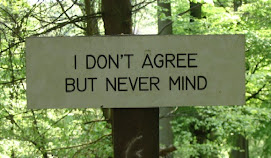There's a mental 'system' which has been in use mainly in the flying business for many years called 'siutational awareness'.
It mirrors the mental systems often recommended by rider (and driver) training, such as the UK's Observe Plan Act, the MSF's 'old' Search predict Act and their new Search Evaluate Execute.
If you want to know more, read INTRODUCTION -Situation Awareness and how it can help drivers
But like many aspects of training, you need a way of assessing how well someone has learned the process.
Enter: situational judgement. This is a bit like hazard perception testing, but rather than 'just' identify whether someone can pick out a 'developing hazard', situational judgement looks at what your response would be to the situation (hazard) you've identified. After all, you might identify a hazard, but decide to accelerate rather than brake . . .
But following on from those two aspects of 'situational', I was intrigued to hear of 'situational leadership'.
This is a style of leadership (really? ;) ), Wiki tells us:
The Situational Leadership Theory, is a leadership theory developed by Paul Hersey, professor and author of the book Situational Leader, and Ken Blanchard, leadership guru and author of The One Minute Manager, while working on the first edition of Management of Organizational Behavior (now in its 9th edition). The Theory was first introduced as "Life Cycle Theory of Leadership". During the mid 1970s, "Life Cycle Theory of Leadership" was renamed "Situational Leadership theory".
In the late 1970s/early 1980s, the authors both developed their own Models using the Situational Leadership theory; Hersey - Situational Leadership Model and Blanchard et al. Situational Leadership II Model.
The fundamental underpinning of the Situational Leadership Theory is there is no single "best" style of leadership. Effective leadership is task-relevant and that the most successful leaders are those that adapt their leadership style to the Maturity ("the capacity to set high but attainable goals, willingness and ability to take responsibility for the task, and relevant education and/or experience of an individual or a group for the task) of the individual or group they are attempting to lead/influence. That effective leadership varies, not only with the person or group that is being influenced, but it will also depend on the task, job or function that needs to be accomplished.
All intersting stuff, but what's it got to do with motorcycling? :)
Well, consider the three 'situationals' as a process:
Awareness
Judgement
Leadership
You identify the hazard, decide the best plan, then put it into action.
That plan, and subsequent action, may mean you need to take the lead, to manage a sitation on the road - making what you want to happen actually happen. Pro-active rather than reactive.
.
Thursday, 2 September 2010
Subscribe to:
Post Comments (Atom)





No comments:
Post a Comment